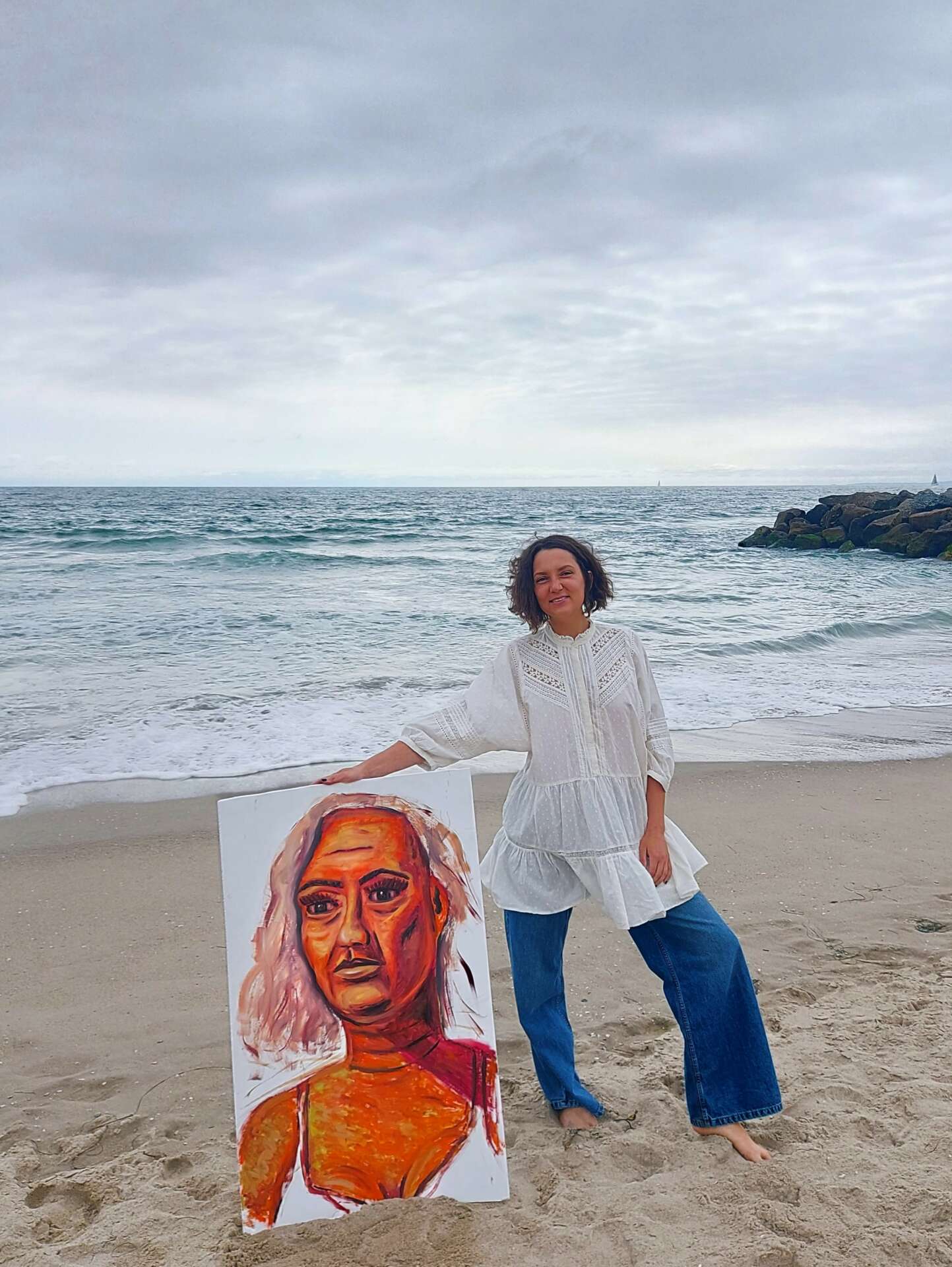We’re excited to introduce you to the always interesting and insightful Tatiana Kharina. We hope you’ll enjoy our conversation with Tatiana below.
Tatiana, thanks for taking the time to share your stories with us today Learning the craft is often a unique journey from every creative – we’d love to hear about your journey and if knowing what you know now, you would have done anything differently to speed up the learning process.
I don’t have a formal art school background. While I earned an Associate Degree in Interior Design, the course didn’t provide me with an extensive foundation in fine art skills. Instead, I developed my skills primarily by practicing on my own with books and online classes. I dedicated time to daily practice, investing as much effort as possible. I also took several in-person oil painting classes and pottery workshops. The most challenging thing in the beginning, I would say, is to turn the initial intention into action, to find time and start creating. Once that’s done, you just need to keep going: trying different mediums, learning various techniques and experimenting.
Another common struggle, one that many artists encounter is when your envisioned creation doesn’t materialize on the canvas as you imagined. This discrepancy can be frustrating and demotivating. To get over that, I have learned to go with the flow of artwork. Releasing the attachment to the imagined final outcome allows me to explore the path the piece naturally takes. Currently, my joy in art lies in the very process of creation rather than fixating on the result.
Lastly, I’d like to share a personal insight. Occasionally, I find myself trapped in my old habits; I get bored with my artwork and sense a lack of progress. The idea of reaching a creative limit is dreadful to me. I perceive art as a boundless ocean with limitless opportunities for growth and advancement. These periods of stagnation are the most challenging and vital at the same time – they help me reach new heights. During these phases, I am learning new skills and experimenting a lot. It’s essential for me to continually evolve both as an artist and as an individual.


Awesome – so before we get into the rest of our questions, can you briefly introduce yourself to our readers.
I got seriously into painting about five years ago. Before that, I was doing art here and there but nothing consistent. At some point, I started feeling a permanent urge to create, and I could no longer ignore it. As soon as I started doing art almost every day, I realized that this was what I was missing in my life. And that’s how it started.
Currently, I work across various mediums and focus on creating portraits and mid to large-format abstract pieces. However, there are other ongoing projects in the background: hand-painted clothing, linocut prints, and floral drawings. The source of inspiration for my art originates from nature, spirituality, and the people who surround me.
As my creative journey advances, I’ve reached a point where sharing valuable knowledge and experiences feels like the next step. Alongside artmaking, I’ve started working on videos for my YouTube channel. I’m also in the process of planning both online and in-person classes. I hope to spread the joy of painting to my audience and inspire others to express themselves through art.


What can society do to ensure an environment that’s helpful to artists and creatives?
From my observations, a significant challenge faced by many artists is the limited access to real-life exposure. I believe it would greatly benefit the creative community if there were an increase in the number of community exhibitions, art fairs, and shows with nominal or no participation fees. That would allow a greater number of artists to showcase their work in person.
Such events not only provide artists with the opportunity to establish personal connections with clients and patrons but also offer a platform for networking among fellow artists, thereby strengthening the artistic community. Today, the cost of participating in art exhibitions or fairs often becomes a significant financial burden for artists. Recognizing this economic inequality is essential, as it creates significant inequality in the art world.

For you, what’s the most rewarding aspect of being a creative?
To be completely honest, the most rewarding aspect for me is knowing that my art and personal story have the power to deeply resonate with others and inspire them to explore and express their own creativity.

Contact Info:
- Website: www.tanuchkiss.art
- Instagram: www.instagram.com/tanuchkiss


